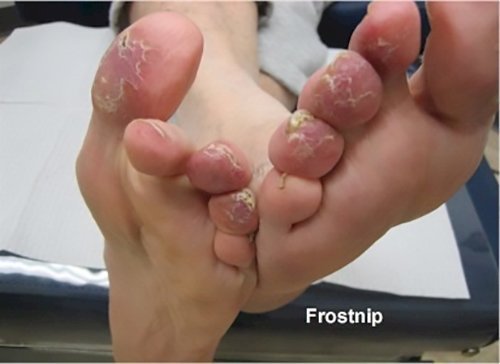Chilblains - it's that time of year again
Chilblain's and Frostnip- chronic cold weather injury
It's winter in the northern hemisphere and time again for cold weather injuries of the feet. I'm starting to see the two most common cold-weather injuries: chilblains and frostnip. The difference between chilblains and frostnip is the presence or absence of moisture.
the two most common cold-weather injuries: chilblains and frostnip. The difference between chilblains and frostnip is the presence or absence of moisture.
Chilblains occur with chronic cold temperatures and in the presence of moisture (think damp, cold British castle). Chilblains do not require that tissue freezes but occurs in temperatures above freezing (35-45 degrees F).
Frostnip, on the other hand, occurs in a dry environment where the superficial tissue actually freezes. Freezing of the superficial skin cells results in dehydration of the cell and cell death.
The origin of the word chilblain is derived from old English. Chil refers to a lower temperature and blain is the name of a superficial area of redness and swelling. Frostnip differs from frostbite in that frostnip is a very superficial skin injury.
The symptoms of chilblains and frostnip are actually quite different. Chilblains present with slight swelling of the toes and redness. The toes and forefoot have a dull ache that is not relieved by rest. With frostnip the affected skin blisters and has a red, brown or wheat-colored crust. Pain is described as a burning type of pain.
To learn about the difference between frostnip,frostbite, and other cold weather conditions please read our article on Frostbite.
So be careful out there. No snow shoveling in your tennis shoes. Be sure to stay warm in your little castle.
Jeff
Jeffrey A. Oster, DPM
Medical Advisor
Myfootshop.com
Updated 01/18/2022

